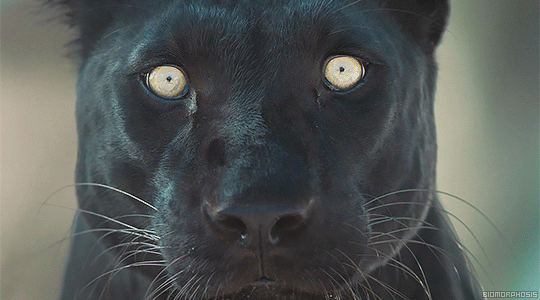#Kaplan
Explore tagged Tumblr posts
Text

#tigers#tiger#wild cat#wild cats#wild life#wild animals#animals#animal#wild thing#pics#art#landscape#scenery#nature#travel#amazing#aesthetic#beautiful photo#traveling#kaplan#hayvan sevgisi#hayvan hakları#hayvanlar#forest#vahşi yaşam#vahşi doğa#tree#trees#doğa#manzara
450 notes
·
View notes
Text
wala napayım kendime oturmuşum öyle :)
47 notes
·
View notes
Text

N Frederick Avenue, Kaplan, Louisiana.
71 notes
·
View notes
Text


4 notes
·
View notes
Text

“In my free time I was mainly occupied with my historical studies. Since my job made it almost impossible to carry books around with me, apart from a small "iron ration," I used to go to libraries and lectures. I also formed a theory. I imagined that we were living during the period before Actium, burdened with the curse of a universal war, and that this period would be followed by another, in which Actiades would be celebrated a series of great and peaceful centuries. Of course, in our lifetime we would only see misery.”[p. 55, 56]
“Today, China, Russia, and the United States, to say nothing of the mid-level and smaller powers, are all running a strange simulation of the Weimar Republic: that weak and wobbly political organism that governed Germany for 15 years from the ashes of World War I to the ascension of Adolf Hitler.
America’s Weimar syndrome may be obvious with the reelection of the institution-destroyer Donald Trump as president. But the entire world is one big Weimar now, connected enough for one part to mortally influence the other parts, yet not connected enough to be politically coherent. Like the various parts of the Weimar Republic, we find ourselves globally in an exceedingly fragile phase of technological and political transition.
I see no Hitler in our midst, or even a totalitarian world state. But don’t assume that the next phase of history will provide any relief to the present one. It is in the spirit of caution that I raise the subject of Weimar.
(…)
Germany during the Weimar period from 1918 to 1933 was a vast and barely united world unto itself, where the rules of order scarcely applied. It was less a government than a system of belligerent and far-flung competing parts, given the regional differences of a sprawling and, in historical terms, recently united Germany. Weimar’s “normal state was crisis,” writes the late historian Gordon A. Craig.
In that sense, Weimar was like our planet today: intimately connected, so as to have crises that cut across oceans, whether it be COVID-19, a global recession, great-power conflicts, Middle East wars, or unprecedented climate change. To recall Weimar is to emphasize and admit the growing interdependencies of our own world, and to accept moral responsibility for it. Like Weimar’s interrelated German states, all countries are now connected in ways in which a crisis for one can be a crisis for all. The Weimar phenomenon, therefore, becomes one of scale.
Weimar was one long cabinet crisis where everything always seemed to be at stake. Central authority exhausted itself just trying to preserve order, and in the final Weimar years, all anyone could talk about in Germany was daily politics. It was truly a permanent crisis, with one breathless series of headlines following another. The public and politicians both were caught up in the moment, in all of its intensity, unable to concentrate on what might come next because the present was so overwhelming.
(…)
Brüning’s cabinet of technocrats had been eaten away by extremist forces in the streets, both Nazis and communists. It may have been the last real chance the Weimar Republic had to right itself. History is Shakespearean as well as geopolitical, a matter of contingencies, and if Brüning had not had the personal limitations that he did, the history of the 20th century might have been vastly different.
The more abject the disorder, often the more extreme the tyranny to follow, and that brings us to Weimar’s last chapter.
(…)
Weimar constituted a vacuum eventually filled by Nazi totalitarianism. But our world today must have a different destiny. Like Weimar, it is an interconnected system of states in which no one really rules. But world geography is still a factor. The Earth is vast enough that no individual political force can really replicate what happened to Germany at the end of Weimar, a loose-limbed republic that covered only the geographical center of Europe. So rather than risk the rise of another Hitler, we are forced to wallow in one emergency or another without pause, as crises seep and ricochet across the globe.
Weimar is now a permanent condition for us, as we are connected enough by globalization and technology to affect each other intimately without having the possibility of true global governance. And that is not the worst outcome—since, had Hitler not arrived, Weimar might ultimately have righted itself. There are quite a few Weimar democracies in the developing world—such as Lebanon, Nigeria, and Bangladesh—and quite a few of them may yet succeed. The key is to make constructive use of our fears about Weimar, so as to be wary about the future without giving in to fate.
(…)
The smaller the world becomes because of technology, the more that every place in it matters. Every river and mountain range becomes strategic. A coup in Niger, like what happened there in 2023, that undermines anti-terrorism activities across a vast region of Africa, exposes the fragility of our world as much as an economic crisis in China. Think of an old wristwatch: so small, but once you start to take it apart, it suddenly becomes vast and complicated. Such is our globe today and in the coming decades.
Will this new global Weimar have the cataclysmic fate of the old German one? Or will it find a measure of stability like in 1920s Germany during the Stresemann years? For that interregnum might have continued indefinitely were it not for the Great Depression that afflicted the entire developed world and sent Weimar spiraling downward. COVID-19 and climate change, despite all the trouble they have caused, have not yet had the very targeted and cataclysmic effect on the globe that the Great Depression had on Germany, which brought Hitler to power. But give it all time. Climate change and pandemics are relentless—and this is to say nothing of wars and great-power fractures.
At the beginning of the 20th century, the British geographer Halford Mackinder electrified much of the intellectual world with his now famous “pivot” theory, which stated that since the Eurasian supercontinent was soon to be connected by railways, the “heartland,” or vast center of Eurasia, held the key to world power, as it was equidistant from all the strategic points in any direction. In building to that conclusion, Mackinder fathomed that the great European imperial powers, by expanding their political control into the most distant corners of Africa and Asia, had essentially mapped out the entire earth. There was no more room left to expand, meaning that their energies could no longer be expended in faraway conquests of jungles and deserts, and so the great powers would increasingly turn on each other.
According to Mackinder’s theory, wars would become worldwide in scale, as every place could be contested. Thus did Mackinder vaguely intuit two world wars and the Cold War decades before they happened.
“Every explosion of social forces,” Mackinder wrote in 1904, “instead of being dissipated in a surrounding circuit of unknown space and barbaric chaos, will [henceforth] be sharply re-echoed from the far side of the globe, and weak elements” in between “will be shattered in consequence.” Almost everywhere there will be consequential and connected human habitation, thus every place will become of critical importance. There will be no place to escape to. The great powers will be trapped together on a finite planet.
World War I may have represented the first time in such stark terms that the great powers of Europe and North America were all bound up in one system. But attrition of the same phenomenon—a tightening and shrinking Earth on account of technology—adds up to big change. Indeed, World War II saw all the major continents of the temperate zone—Europe, North America, and Asia—integrated into the same destructive conflict system: a world system that was only deepened and intensified during the almost half-century-long Cold War. And since then, into the 2020s, there has been a steady advance of high-tech military acquisitions that has made the world and its conflicts increasingly claustrophobic. Because every place is strategic, the possibilities of conflict become more numerous than ever. And yet no global government has ever been on the horizon.
Meanwhile, the great Eurasian land powers of China, Russia, North Korea, and Iran are locked in a conflict against a constellation of forces including the United States, its western Pacific allies, Ukraine, Israel, and moderate Sunni Arab states. A high-end arms race is underway in the Indo-Pacific region with a focal point of Taiwan and the South China Sea. A breakout of military hostilities there between the world’s largest and second-largest economies could be an extinction-level event for world financial markets, as well as for supply chains.
Truly, we are all trapped with each other. Isolationism, a concept that originated when it took a week to get to Europe by steamship, is not an option; neither is muscular interventionism, since it would be unsustainable given all the accelerating crises and the possibility of being periodically caught in a quagmire. As in Weimar, the need for wise global leadership and effective, rapid-fire decision-making increases by the day, just as it seems to recede before us. A tightening international crisis demands increased cooperation among states, even as globalization—which is a shallow vehicle compared to the naked territorial interests of these same states—is not nearly advanced enough to sustain it. The first half of the 21st century may be as frightening and revealing as the first half of the 20th.”
3 notes
·
View notes
Text
Theories of Direct Reference
Theories of direct reference focus on how certain linguistic expressions (such as proper names, demonstratives, and indexicals) directly refer to objects or entities in the world without the need for intervening descriptive content. Here are some of the main theories and approaches within direct reference philosophy:
1. Causal Theory of Reference
Key Proponent: Saul Kripke (with contributions from Hilary Putnam and others).
Summary: The causal theory of reference holds that a name refers to an object by virtue of a causal chain of communication that links the name to the object. The chain begins when the name is originally assigned to an object, and subsequent speakers refer to that object through this causal link, even if they don't possess full descriptive knowledge of the object.
Example: The name "Aristotle" refers to the historical figure Aristotle because there is a causal history connecting the use of the name to the actual person, regardless of whether the speaker knows all details about Aristotle.
Key Features:
Rigid Designators: A name refers to the same object in all possible worlds where that object exists.
No Descriptive Content: Reference is direct and not mediated by a description or mental representation.
2. Direct Reference Theory of Names
Key Proponent: Ruth Barcan Marcus.
Summary: Ruth Barcan Marcus advocated for a direct reference theory where proper names refer directly to objects, not through descriptive meanings but as "tags" or labels that identify the object. This theory refutes the descriptive view of names put forth by philosophers like Bertrand Russell, who argued that names function as shorthand for descriptions.
Example: "Venus" refers to the planet regardless of any specific description (e.g., "the brightest planet visible in the sky"). The name refers to the object directly.
Key Features:
Rigid Reference: Like Kripke's rigid designators, names refer to the same object across all possible worlds.
Meaning vs. Reference: The meaning of a name is not determined by descriptive content but by its reference to an actual object.
3. Kripke’s Rigid Designator Theory
Key Proponent: Saul Kripke.
Summary: Kripke introduced the concept of rigid designators, arguing that proper names are rigid because they refer to the same object in every possible world where the object exists. His famous "modal argument" suggested that names must refer directly because they maintain their reference even when considering counterfactual or hypothetical situations.
Example: In every possible world where Aristotle exists, the name "Aristotle" refers to the same person, even if in that world he may not have been a philosopher.
Key Features:
Distinction Between Necessity and Contingency: Kripke distinguished between necessary and contingent truths, using direct reference theory to argue that some facts (like "Aristotle is Aristotle") are necessarily true, while others (like "Aristotle was a philosopher") are contingently true.
4. Millianism
Key Proponent: John Stuart Mill (as an originator).
Summary: In Mill’s theory, a proper name has no meaning or descriptive content but serves only to refer to the object it names. This position, called Millianism, views proper names as "denotative" terms that only serve the function of pointing to their referent.
Example: The name "Homer" refers directly to a specific individual (if such a person existed) and does not carry any additional meaning or descriptive properties.
Key Features:
No Connotation: Names are devoid of descriptive meaning and refer purely to their objects.
Contrast with Descriptive Theories: This approach contrasts with theories that associate names with sets of descriptions.
5. Putnam’s Twin Earth Thought Experiment
Key Proponent: Hilary Putnam.
Summary: In his famous "Twin Earth" thought experiment, Putnam argued that the meaning of certain terms (such as natural kind terms like "water") is determined not by descriptive content but by external factors in the world. This supports the view that reference is a matter of causal-historical connections rather than internal mental descriptions.
Example: On Twin Earth, where "water" looks like water but is chemically different (XYZ instead of H2O), the word "water" on Earth refers directly to H2O, not to XYZ, even if it has the same superficial properties.
Key Features:
Semantic Externalism: The meaning and reference of terms depend on the external world and the environment, not just the mental state of the speaker.
Natural Kinds: Terms like "water" refer directly to the kind in question, based on their real essence, even if speakers are not aware of all its properties.
6. Kaplan’s Theory of Indexicals and Demonstratives
Key Proponent: David Kaplan.
Summary: Kaplan extended direct reference theory to indexicals (e.g., "I", "now", "here") and demonstratives (e.g., "this", "that"). Kaplan argued that these terms directly refer to objects or individuals in the context of utterance, without needing descriptive content.
Example: The word "I" refers directly to the person speaking, without the need for a description of who they are.
Key Features:
Context-Sensitivity: The reference of indexicals and demonstratives depends on the context of utterance, but their reference is direct and does not rely on descriptions.
Character and Content: Kaplan introduced a distinction between the character of a term (a rule that determines reference based on context) and the content (the actual referent).
7. Donnellan’s Referential/Attributive Distinction
Key Proponent: Keith Donnellan.
Summary: Donnellan distinguished between the referential and attributive uses of descriptions. In the referential use, a speaker uses a description to directly refer to a specific object (even if the description is incorrect). In the attributive use, the description is used to identify whatever object fits the description.
Example: If someone says, "The man drinking a martini is my friend," they might refer to a specific individual (referential use), even if the man isn’t actually drinking a martini. In this case, the speaker’s intention determines reference, not the truth of the description.
Key Features:
Referential Use: In the referential use, the description is used as a tool to refer directly to an object, even if the description is inaccurate.
Attributive Use: In the attributive use, the description serves to identify an object that fits the description.
Theories of direct reference emphasize that certain terms (especially names, indexicals, and demonstratives) refer directly to objects in the world without the mediation of descriptive content. These theories challenge earlier views that tied reference to descriptions or mental representations, offering a view in which context, causal chains, and external factors play key roles in determining reference. Major contributions come from Kripke's rigid designators, Kaplan's theory of indexicals, and Putnam's causal theory of natural kind terms.
#philosophy#epistemology#knowledge#learning#chatgpt#education#ontology#metaphysics#Direct Reference#Causal Theory of Reference#Rigid Designators#Millianism#Kripke#Kaplan#Putnam#Referential Theory#Indexicals and Demonstratives#Natural Kind Terms
3 notes
·
View notes
Text

Hannah Kaplan || 37 || #708 || Natalie Portman || Closed
Personality:
She holds onto the moments that leave her with a taste of the girl she used to be; it comes unexpectedly in her laughter, in her daughter’s smile, in the way the sunshine warms her naked skin. Hannah used to be carefree. She used to sneak out to parties and play seven minutes in heaven and drink without wondering what was in her cup. She used to think bad things only happened to bad people. But now in her moments of desperation, when the world feels empty and cold, she reminds herself this: she already died. She died and asked God to send her back to earth to swim in lakes and make challah with her daughter's small hands and smell the wild flowers that fill overgrown fields and fall in love and have her heart broken and make art that carried her hurt and she asked all this with the promise that she would never forget the miracle of being alive.
Biography:
Hannah grew up on 20 acres in the hills of New Hampshire and it will always be home to her; Sitting under the ripening trees in October and biting into a Snow Sweet, the juices dripping onto her sketchbook as she attempts to untangle the chaos inside of her head. Daddy hollerin’ for her to finish her chores, her older sister giving her the stink eye at dinner as Hannah tried to sell a story to their mother about staying at her best friend’s house for the night and no mama she’s not going to meet up with another senior to get groped in the back of his car, she promises! She was always a little spoiled, always treated a little too gently. Her parents never raised their voices no matter how many times she screwed up. Not when they had to pick her up from the station when she got caught driving daddy’s car with a bottle of whiskey or when mama found the pregnancy tests in the trashcan the night after prom. She didn’t really have a reason to leave the nest after high school so she simply.. didn’t. Hannah half-heartedly worked the farm during the day and found her fair share of trouble at night. After a few years with no other prospects on the horizon her parents sat her down and made her commit to something, anything, they’d pay for it if only she’d follow through. After a week of thought she decided to use their offer to go to art school in California with the promise that she’d graduate.
She painted and drank and sculpted and felt at peace with the world. Every morning she woke with purpose, with a drive to create and put something meaningful into the world. To find a way to show others the love and beauty of God that she saw in all his creations. She went to a lot of parties, met a lot of men and a lot of women and they were all beautiful in their own way. Hannah threw herself into a toxic relationship that left her reeling in the aftermath, missing a semester to stay in an inpatient facility. It was here that she found her purpose, another lost soul watching her sketch with hesitant curiosity. Hannah encouraged the other woman to pick up a pencil herself and give it a try—draw the world how she saw it, in its entire ugly truth.
Hannah returned to school and got a bachelors of science to pursue art therapy, and juggling the weight of studying and vying for spaces in local galleries left her little time to entwine herself in bad choices. Little, but just enough to get to know a tortured ex catholic that had been drawn to her showcase on religion and self image. The question they both desperately sought an answer for: am I enough for God?
Hannah and Roman had been good to each other, if only in the beginning. Like many marriages theirs began to feel like a chore. He spent more and more time at work, and even at home he was never fully present. The sadness in his eyes hinting at the weight he was carrying. Maybe she should’ve expected as much when she married a cold case detective. She had to find something to fill the void Roman had created and that came in the form of a secret lover. He was young and attractive and made her feel seen. They’d snuck around together for a few months before Hannah realized she was pregnant, praying praying praying it was Roman’s, and ended the affair. The last thing she expected was to wake in the night 7 months later with her ex boyfriend by her side demanding to know if the kid was his.
She died that night. It’s a fact, hospital record. Her heart stopped for four and a half long minutes. When she awoke from the induced coma a week later and realized her daughter was not inside her Hannah felt grief that wasn’t entirely quelled by the sight of little june in Roman’s arms. Those moments had been stolen from her, her body felt awkward and wrong.
It was a hard recovery. Physically, emotionally, spiritually. Her faith wavered and Roman could not provide her the answers she needed. But she knew it was her pulling away from him that began this situation, so she gritted her teeth and went to therapy and let him sleep on the couch so he could be close but not too close. Roman did her a kindness and filled for divorce. She moved back home, her parents taking care of Hannah as much as they took care of June. She couldn’t be someone’s mother right now— she needed to be a girl again, sitting under the big trees and eating apples and sneaking off to skinny dip in the lake.
It took a few years before she was able to be junes mother and a few more before she was ready to be an adult again. She took June and moved back to California, trying so hard to find a sense of normalcy. She started running art therapy sessions in the county jail, facing what scared her head on. She and June had returned to New Hampshire to celebrate her older sisters engagement when the situation in New York began to develop.
Things happened so quickly from there. Outbreaks popped up throughout the country as the family attempted to plan their next move. Folks looking for shelter began to show up on the farm and brought trouble with them. Mama was bitten and daddy wouldn’t leave her side. With tears in her eyes Hannah left with her sister and June to her fiancées place in Martha’s Vineyard. They’d been able to ride out another few months there before fleeing survivors forced their way into the island. Her sister died, shot by some scavenger as the group attempted to flea with their neighbors on a boarding ship.
And now here they are—floating, aimless, out of food and scared and trying to decide if they’d rather drown or starve.
Pre Outbreak Occupation: Art Therapist Previous Zombie Experience: Her first encounter was watching her mother be attacked, the skin pulled from her neck like rubber as it stretched until it tore. She’s been terrified of them since and has run during subsequent encounters. Marital Status: Divorced Children: June Drake - 6 Years Old Residence: Loft #708 Years residing at The Wexley: Post Outbreak New Arrival Connections:
Roman Drake - Ex Husband
Harper Jennings - Ex Sister in Law
4 notes
·
View notes
Text

#tigers#tiger#wild life#wild cat#wild things#animal#animals#wild animals#pics#art#landscape#scenery#nature#travel#amazing#aesthetic#beautiful photo#traveling#photagraphy#kaplan#vahşi yaşam#hayvan sevgisi#hayvan hakları#doğa#manzara#vahşi kedi#tree
285 notes
·
View notes
Photo

10 notes
·
View notes
Text
🖤🖤🖤
Konuşandan deyil susandan korkacaksın.
2 notes
·
View notes
Text

Kaplan
5 notes
·
View notes
Photo
kibby





#cat#cats#lion#jaguar#tiger#kaplan#aslan#kedi#kitty#yellow#if I die by cat#my last words were pspspsps
113K notes
·
View notes
Text
Dr. Sheldon Greenfield, Who Exposed Gaps in Health Care, Dies at 86
Dr. Sheldon Greenfield, whose pioneering research found that older patients with breast and pancreatic cancer got subpar treatment and that patients who grill their doctors during consultations receive better care, died on Feb. 26 at his home in Newport Beach, Calif. He was 86. The cause was colon cancer, his daughter Lauren Greenfield said. Dr. Greenfield was a founder and director of the Center…
#Colleges and universities#Deaths (Obituaries)#Doctors#Greenfield#Irvine#Kaplan#Medical devices#Medicine and Health#Research#Sheldon (1938-2025)#Sherrie#University of California
0 notes




